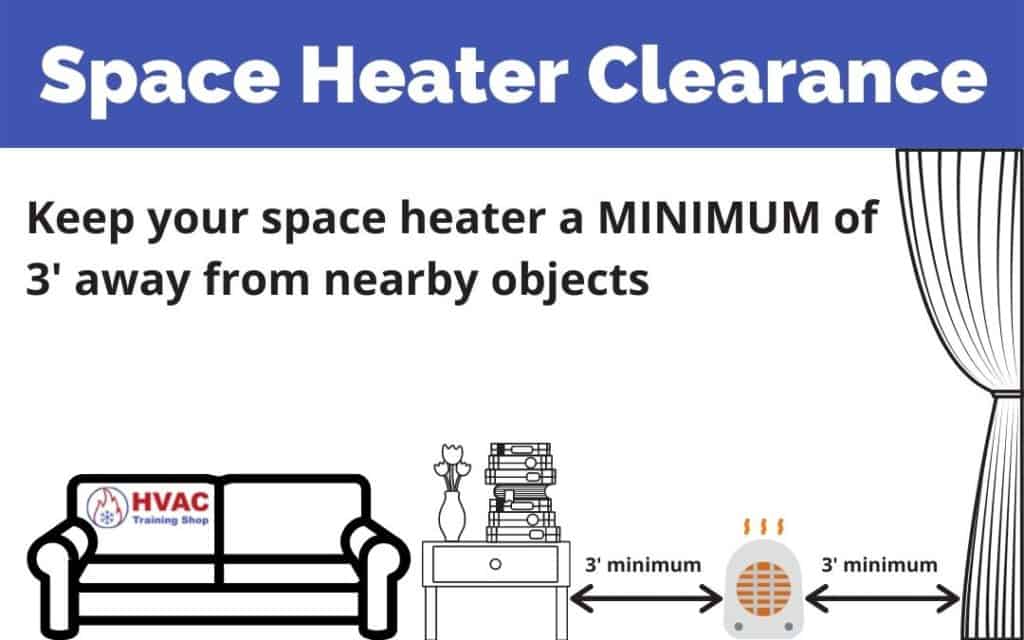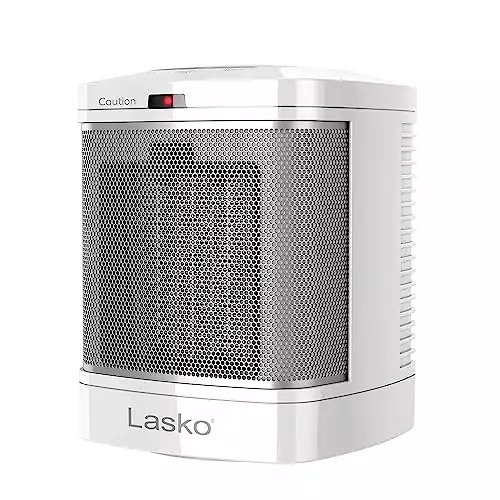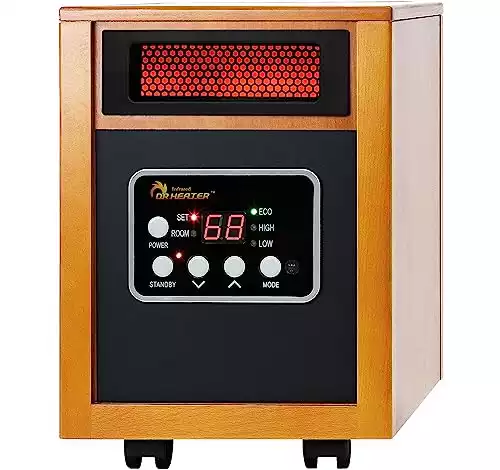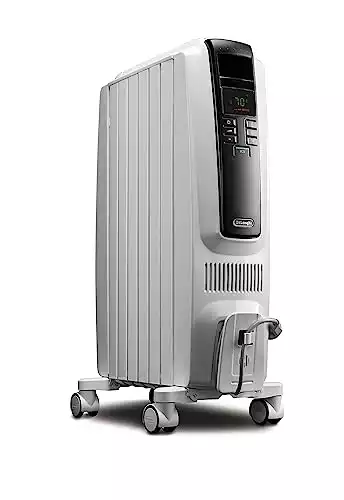Is your room too cold? The first thing that most people do is go out and buy a space heater.
But when they get home, they’re left by themselves to figure out the next critical task: Where do I place the space heater?
The placement of your space heater is critical to its safety and function.
Place it in the wrong spot and you’ll see reduced efficiency and higher electricity bills. Or worse yet- a fire inside your home.
In this article, I’ll discuss what to consider when placing your space heater.
I’ll also go over a few common types of space heaters and where you should place them.
What to consider when placing a space heater
When figuring out the best place to put your space heater, you need to consider a few different things:
- Size of space
- Distance from nearby objects
- Nearby water and moisture sources
- Distance from flammable materials
- Vicinity to other heat sources
I’ll go over these factors below:
Size of space
The size of the space is the first thing that you should consider when deciding where to place your space heater.
It’s much easier to heat a small area than a large area. So if you’re going to be working in a small office, it will be much easier to heat that area than a large living room.
If you’re going to be spending most of your day in one room then it might be worth it to turn down the heat in the rest of your home. Then use a small space heater to just heat the space that you’ll be spending your time in.
Distance from nearby objects and walls
Keeping your space heater away from nearby obstructions is critical for heating your space up.
If your space heater is too close to a nearby object, its airflow will become blocked.
I went into a home once and saw a space heater tucked into a corner. Unsurprisingly, most of the room was ice cold– but that corner was hot and toasty!

Water and moisture sources
Keeping your space heater away from water isn’t so much of an efficiency issue as much as it is a safety issue.
Electricity and water are two things that need to be kept away from each other. So make sure that your electric space heater is kept far away from sources of moisture.
Here are some sources of moisture that you should keep your space heater away from:
- Sinks
- Drains
- Showers
- Humidifiers
If you really need to heat up a moist area such as a bathroom, then you’ll need to ensure that your space heater has the proper safety implements in place.
Check out my article on bathroom space heaters for more information.
Distance from flammable materials
Space heaters are capable of generating high temperatures. The problem is that high temperatures around flammable materials are a recipe for fire.
Keep all flammable materials away from your space heater.
Flammable materials include, but are not limited to:
- Paper
- Clothing
- Blankets
- Curtains
- Cardboard
The ETA Safety Laboratory recommends that your space heater is kept clear from nearby flammable objects for a minimum of 36” in front and 18” in the back.
I recommend that you go a step further and keep your space heater clear from ANY objects for 36”. It’s not that hard, and you’ll get better airflow.
Vicinity to other heat sources
One final thing to consider when placing a space heater is its vicinity to other sources of heat.
Basically, you want to keep your space heater away from other sources of heat.
Appliances such as toasters and ovens produce large amounts of heat. Imagine having both an oven and a space heater next to each other– things would get extremely hot.
If your space heater is too close to another source of heat, it will get way too hot. Some space heaters might malfunction… or even melt!
Types of space heaters and where to place them
Depending on the type of space heater you have, one location might be better than another.
I’ll go over a few different types of space heaters and their placements below:
Convective space heater placement
Convective space heaters (also called forced-fan space heaters) generate heat by running an electrical current through a heating element.
As the element heats up, a fan blows air over it and distributes heat into the space.
Convective space heaters work best for large open areas such as living rooms and basements.
Convective space heaters have a fan that produces a bit of noise, so they aren’t the best for bedrooms.
When placing a convective space heater, orient the heater so it blows air toward the middle of the room. Keep all objects away from the heater, so the heater has plenty of room to “breathe”.
This Lasko Ceramic Space Heater has an ALCI safety plug- so its safe to use in wet areas such as bathrooms.
Infrared space heater placement
Infrared space heaters heat an area with infrared light. The light bulb in the heater generates infrared light energy that radiates outward, heating any object in its path.
Infrared space heaters work best for heating up a small area of a room. For instance, if you are working in a garage but only need to keep one side of it warm.
Infrared heaters only heat up objects in their immediate area. So you’ll need to place an infrared heater near the area that you want to heat.
Infrared heaters generate a fair amount of visible light, so they aren’t suitable for bedrooms or places that need to be dark.
The Dr. Infrared Portable Space Heater has a thermostat for precise temperature control. It only gets warm to the touch, so it's safe to use around pets and children.
Oil-filled space heater placement
Oil-filled space heaters are a type of filler space heater that generates heat by heating up a filler material (in this case it’s a type of oil).
Oil-filled heaters are suitable for heating small- to medium-sized spaces. Oil-filled heaters don’t have a fan, so a convective heater is more suitable for large spaces.
When placing an oil-filled heater, keep it away from nearby objects and people. Oil-filled heaters are hot to the touch, so you don’t want somebody bumping into it and burning themselves.
This De'Longhi Oil-Filled Space Heater has a 24-hour timer that's perfect for a "set-and-forget" schedule. It also has an anti-freeze setting so you can use it in your basement to help protect against frozen pipes.






